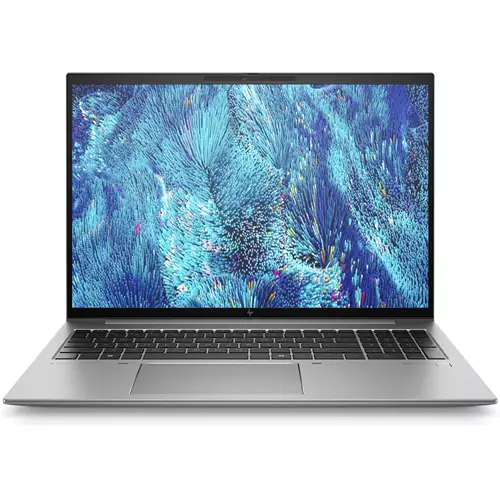
 1
1Introduction

I would like to thank Dangbei for supplying the sample.

The Dangbei Atom projector manages to combine a few very interesting and core features into a compact enclosure which includes an ALPD Laser source, a fully integrated Google TV experience and plenty of smarts to make setup of the unit easy. While it is not meant to be portable as it does not have a built-in battery, its form factor also makes is easy to store away or transport to your friends house for movie night. Dangbei as a brand has been around for a while and is also the brand behind the Emotn N1, one of the first projectors that managed to offer the full Google TV and Google App Store experience inside a projector. The Dangbei Atom Laser Projector we are reviewing today manages to output Full HD, squarely aiming it at the mainstream user.
| Dangbei Atom | |
|---|---|
| Light Source: | 0.33″ DMD, Laser (ALPD Laser Technology), 30.000 hour lifespan |
| ANSI Luminance: | N/A (1200 ISO Lumens) |
| Resolution: | 1920x1080p |
| Screen Size: | 40″ ~ 180″ (Recommended 60″ ~ 100″) |
| Focus Mode: | Automatic, dToF + Camera Auto Focus |
| Keystone Correction: | 4-point keystone correction |
| Audio: | 2 x 5 W, Dolby Digital, Dolby Digital Plus |
| Projection Method: | Forward, backward, as well as ceiling mounted projection |
| Ports: | 1x USB 2.0, 1x HDMI IN (ARC), 1x Audio Combo Jack |
| Wireless Connectivity: | WiFi: 2.4/5.0 GHz 802.11a/b/g/n/ac, Bluetooth: 5.1/BLE |
| Memory/Storage: | 2 GB DDR3 / 32 GB eMMC5.1 |
| Operating System: | Google TV |
| Casting: | Chromecast |
| Battery: | N/A |
| Power Consumption: | 80 W |
| Dimensions & Weight: | 7.68 x 7.68 x 1.87 Inches, 2.82 kg |
| Other Features: | HDR10, HLG, 3D |
| Operating noise: | Less than 25 dBA |
‘).appendTo(‘body’); $(window).scroll(nextPageScrollHandler); } if (evt.touches.length==0) $(‘#keep-scrolling-buffer’).removeClass(‘show’); else { if ($(‘#keep-scrolling’).hasClass(‘show’)) $(‘#keep-scrolling-buffer’).addClass(‘show’); } }); }); ]]>
‘); $(‘.tpu-fancybox-wrap’).css(‘maxWidth’, maxWidth);*/ instance.$refs.stage.on(‘transitionend’, function() { updateButtonPos(instance); }); }, onUpdate: updateButtonPos, afterShow: function(instance, slide) { updateButtonPos(instance); instance.$refs.inner.find(‘.fancybox-tpu-nav’).show(); }, beforeClose: function(instance, slide) { instance.$refs.inner.find(‘.fancybox-tpu-nav’).hide(); }, afterClose: function(instance, slide) { $(‘.tpu-fancybox-wrap’).contents().unwrap(); $(‘body’).removeClass(‘tpu-fancybox-body-wrap’) }, baseTpl: ‘
‘ + ‘‘ + ‘‘ + ‘‘ + ‘
‘ + ” + ” + ‘
‘ + ‘
‘, }); }); } loadjs.ready([‘jquery’, ‘fancybox’], function() { attachLightbox(function() { return $(‘.text a:has(>img)’).filter(function(i, el) { return $(this).attr(‘href’).match(/.(jpg|gif|png)(?=$|[?#])/) != null; }); }); }); loadjs.ready([‘jquery’], function() { $(‘.review’).on(‘click’, ‘.spoiler > a’, function(e) { e.preventDefault(); $(this).next(‘div’).toggle(); }); $(‘.review’).on(‘click’, ‘.ispoiler’, function(e) { e.preventDefault(); $(this).find(‘div’).css(‘filter’, ”); $(this).removeClass(‘ispoiler’); }); }); loadjs.ready([‘jquery’], function() { $(‘table.tputbl.sort-header’).find(‘th[scope=col]’).css(‘cursor’, ‘pointer’).on(‘click’, function(e) { var header=$(this) header.parents(‘table’).find(‘th[scope=col]’).removeClass(‘sort-active’); header.addClass(‘sort-active’); var idx=header.parents(‘tr’).find(‘th[scope=col]’).index(this); header.parents(‘table’).find(‘td, th[scope=row]’).filter(function() { return $(this).index() == idx; }).sortElementsTPU(function(a, b) { a=$(a).text(); b=$(b).text(); if (header.hasClass(‘sort-force-number’)) { a=parseInt(a, 10); b=parseInt(b, 10); } if (header.hasClass(‘sort-nan-is-zero’)) { if (isNaN(a)) a=0; if (isNaN(b)) b=0; } try { var result=a.localeCompare(b, undefined, { numeric: true, sensitivity: ‘base’ }); return result; } catch(e) { if (a>b) return 1; if (a
- Intel Arc B580 Review – Excellent Value
- FiiO BTR17 Portable Bluetooth DAC and Headphones Amplifier Review
- ASRock Arc B580 Steel Legend Review
- Endgame Gear XM2w 4K Review
- Sparkle Arc B580 Titan OC Review
- FL Esports OG98 Tri-Mode Mechanical Keyboard Review
- AMD Ryzen 7 9800X3D Review – The Best Gaming Processor
- DUNU DK3001BD In-Ear Monitors Review – Brain Dance Time!
- Upcoming Hardware Launches 2024 (Updated Nov 2024)
- Geometric Future Model 5 Review



































